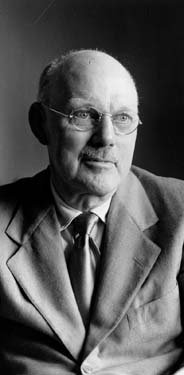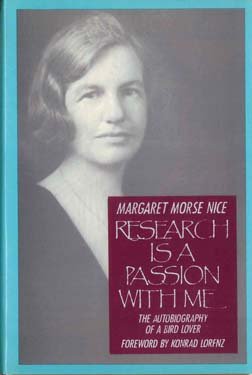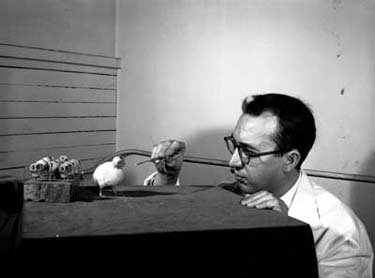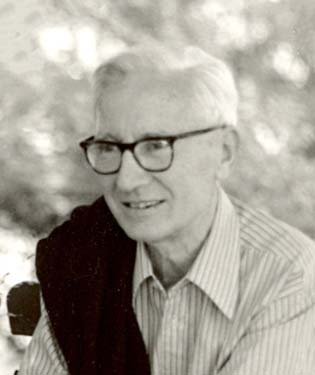Ethology Returns to the University of Chicago
"In the 1930s, ethology began to become a respectable branch of zoology."
-Niko Tinbergen
Ethology fell into decline in the United States after the early 1900s although it became a respected discipline in Europe and Great Britain. Two Chicago scientists quietly and persistently maintained the legacy of Whitman and Craig. They were University behavioral ecologist Warder Clyde Allee, who was the first to use the term "peck order" to define social rank among captive domestic fowl. He kept his birds in a small enclosure at the present site of the northern portion of Crerar Library.
Margaret Morse Nice, a highly respected independent ornithologist, is best known for detailing the behavior of the song sparrow (Melospiza melodia). While attending a conference in England, she met German ethologist Konrad Lorenz, then totally unfamiliar with the work of Whitman and Craig. Thus began the collaboration between ethologists on both sides of the Atlantic.
In 1953, Eckhard Hess joined Chicago's Department of Psychology where he set about restoring ethology to instructional and research programs. He continued and expanded studies of imprinting begun by Whitman, Craig, and continued in Europe by Lorenz and others. He also began the study of pupillometrics — the innate response of the pupil to external stimuli including visual interest, fear, and problem solving. Hess's students have had successful careers in behavioral study, primatology, wildlife park management, work with endangered species, and academia.

From the Photographic Archive, Special Collections Research Center, University of Chicago Library. Available at: http://photoarchive.lib.uchicago.edu/.Identifier: apf1-00292

Nice, Margaret Morse. Toronto, Ontario: Consolidated Amethyst Publications. 1979. http://pi.lib.uchicago.edu/1001/cat/bib/11186794 Crerar: QL31.N5 A36.

Photo from the University of Chicago Magazine, 1954. Accessed at: http://magazine.uchicago.edu/0212/features/retro-pics5.html. December 30, 2013.
The late psychology professor Eckhard Hess conducts experiments on chicks, fitting them with latex helmets and goggles to determine whether chickens see in three dimensions and how they peck food.

From Max Planck Gesellschaft/Archiv. Accessed at: http://commons.wikimedia.org/wiki/File:Lorenz_and_Tinbergen2.jpg. December 31, 2013.
